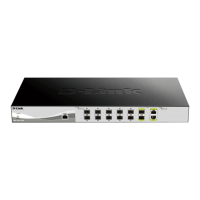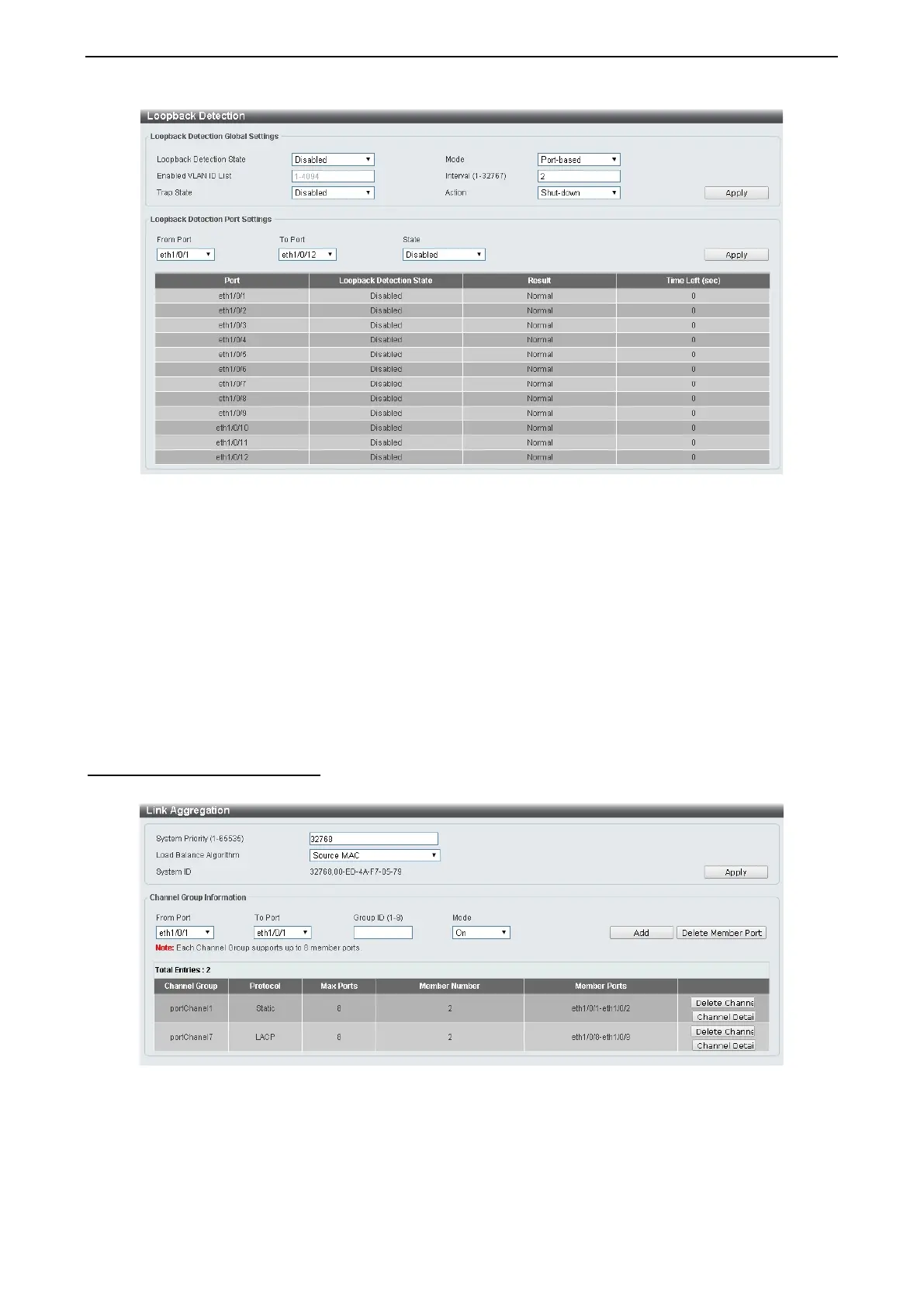4 Configuration D-Link DXS-1210 Series User Manual
4
4
3
3
Figure 4.72 – L2 Features > Loopback Detection Settings
Loopback Detection State: Enable or disable loopback detection. The default is disabled.
Mode: Select either Port-based or VLAN-based.
Enabled VLAN ID List: Enter the VLAN ID for loop detection. This only takes effect when the VLAN-based
is selected in the Mode drop-down list.
Interval (1-32767): Set a Loop Detection Interval between 1 and 32767 seconds. The default is 2 seconds.
Trap State: Select to enable or disable the loopback detection trap state.
Action: Select Shut-down or None for the loopback detection.
From Port / To Port: Enter a consecutive group of ports to be configured starting with the selected port.
State: Use the drop-down menu to toggle between Enabled and Disabled. Default is disabled.
Click Apply to save your settings.
L2 Features > Link Aggregation
The Link Aggregation page allows you to view and configure the link aggregation settings.
Figure 4.73 – L2 Features > Link Aggregation
System Priority (1-65535): Enter the system’s priority value you want to use. This value must be between 1
and 65535. By default, this value is 32768. The system priority determines which ports can join a port-
channel and which ports are put in the stand-alone mode. The lower value has a higher priority. If two or
more ports have the same priority, the port number determines the priority
Load Balance Algorithm: Specify the load balancing algorithm that will be used. Options to choose from
are Source MAC, Destination MAC, Source Destination MAC, Source IP, Destination IP, and Source

